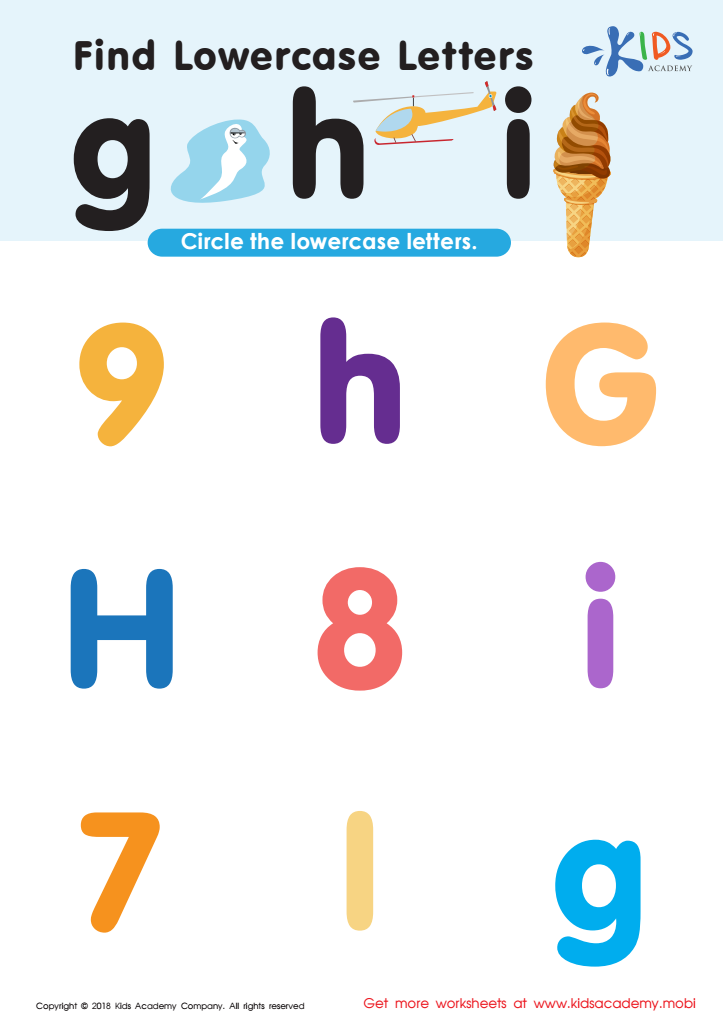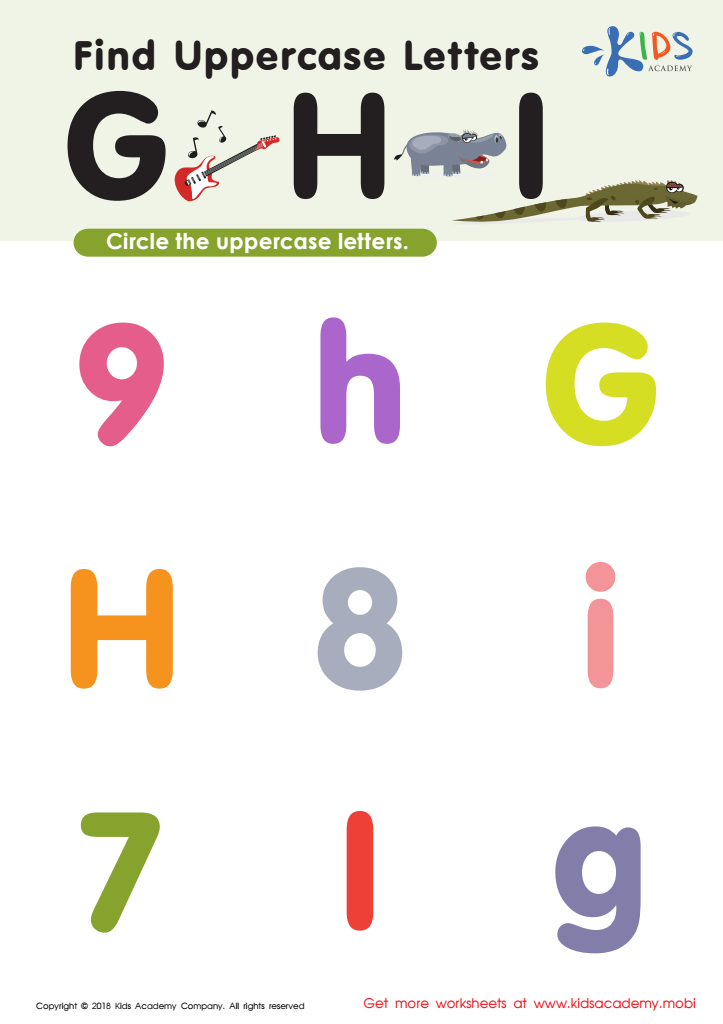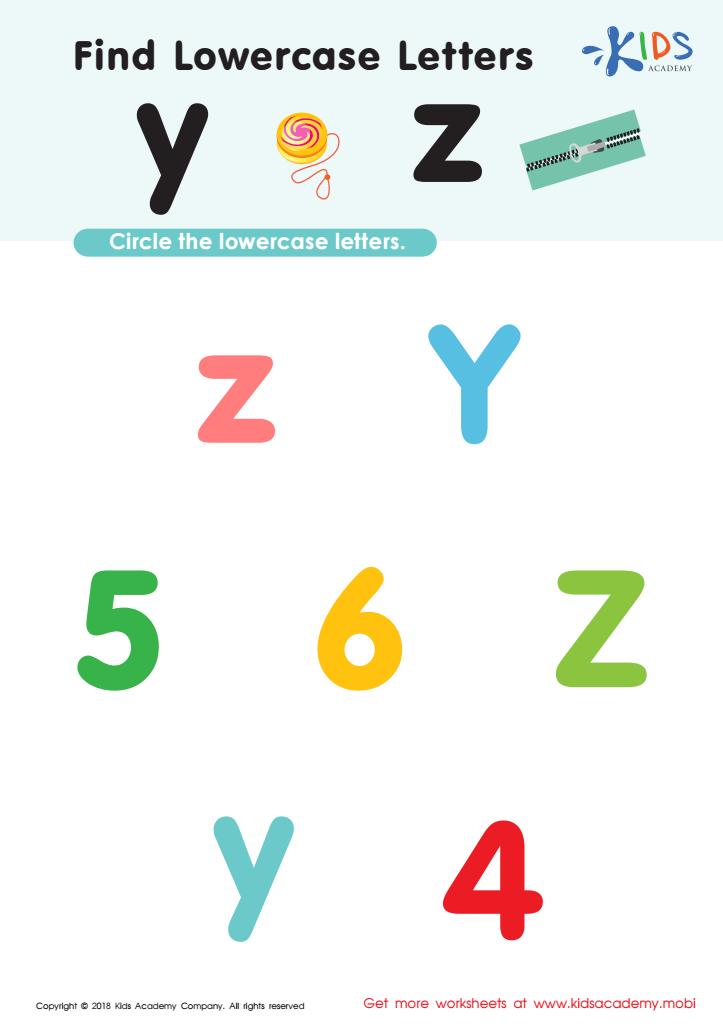Visual discrimination Normal Upper & Lowercase Letters Worksheets for Ages 3-4
4 filtered results
-
From - To
Enhance your child's visual discrimination skills with our engaging Normal Upper & Lowercase Letters Worksheets, designed specifically for ages 3-4. These fun and interactive activities focus on helping young learners identify and distinguish between uppercase and lowercase letters, laying the foundation for strong literacy skills. Through colorful illustrations and playful exercises, toddlers can improve their recognition, memory, and overall understanding of the alphabet. Perfect for home or classroom use, these worksheets encourage early learning in a stimulating way. Foster your child's love for letters while supporting their developmental milestones with our thoughtfully crafted worksheets. Get started on this educational journey today!


Find Lowercase Letters g h i Worksheet


Find Uppercase Letters G, H, and I Worksheet


Find Lowercase Letters y z Worksheet


Find Uppercase Letters V, W, X Worksheet
Visual discrimination is a crucial skill for young children, especially when learning about uppercase and lowercase letters. For parents and teachers of 3-4 year-olds, understanding its importance can significantly enhance literacy development. Visual discrimination allows children to recognize differences and similarities between letters, which is foundational for reading and writing.
When children practice distinguishing between the shapes of letters, they enhance their ability to identify letters in various contexts, supporting early reading skills. This skill also lays the groundwork for handwriting, as children begin to learn how to form letters correctly. Moreover, being able to recognize uppercase and lowercase letters aids in word recognition, enhancing vocabulary and comprehension as they progress.
Engaging children in fun and interactive activities that promote visual discrimination—like sorting games, puzzles, or letter matching—can improve their confidence and proficiency in letter recognition. This not only supports their academic growth but also fosters a love for learning by making literacy enjoyable.
In summary, prioritizing activities that enhance visual discrimination for uppercase and lowercase letters is essential for parents and teachers alike, as it directly impacts young children's success in their early educational journey.
 Assign to My Students
Assign to My Students












